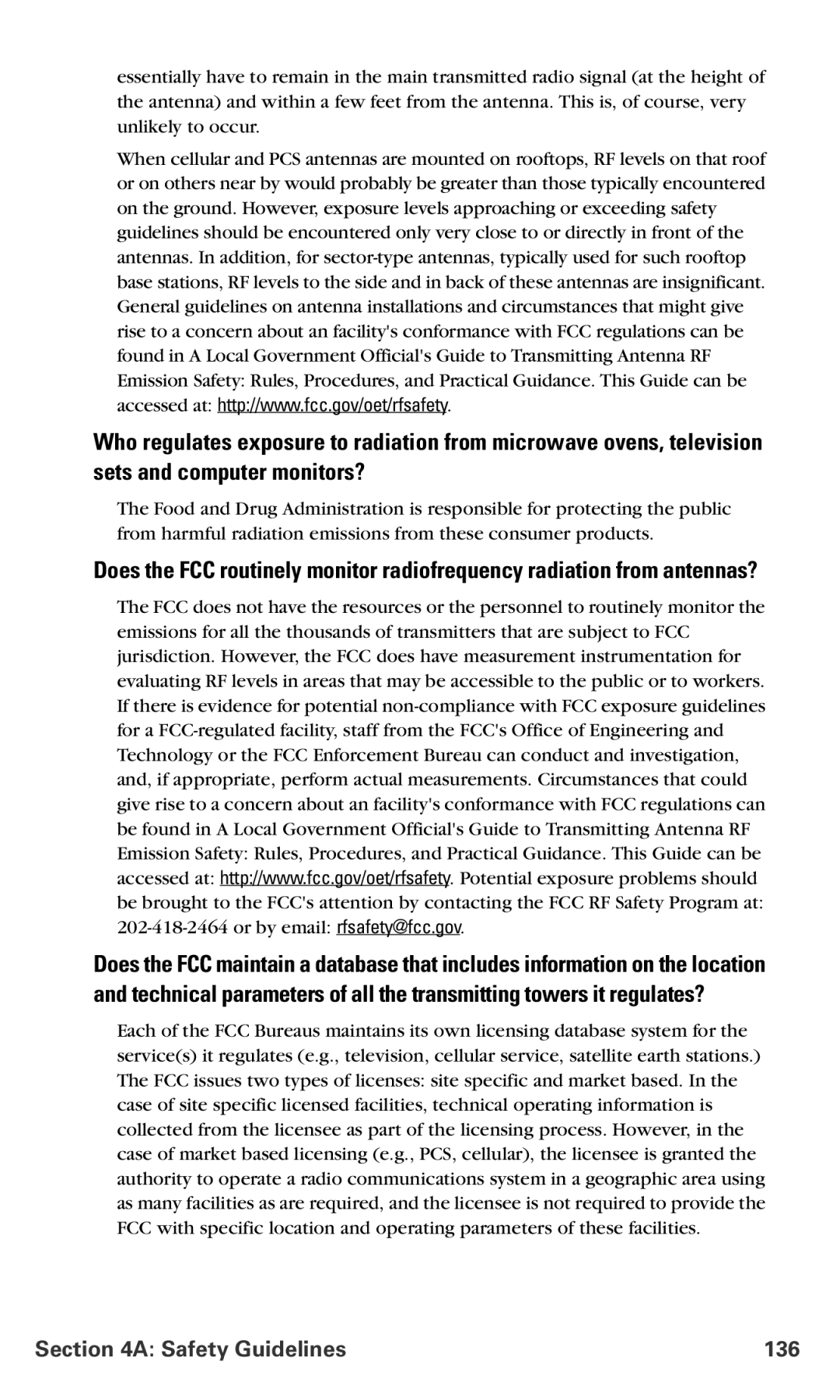essentially have to remain in the main transmitted radio signal (at the height of the antenna) and within a few feet from the antenna. This is, of course, very unlikely to occur.
When cellular and PCS antennas are mounted on rooftops, RF levels on that roof or on others near by would probably be greater than those typically encountered on the ground. However, exposure levels approaching or exceeding safety guidelines should be encountered only very close to or directly in front of the antennas. In addition, for
Who regulates exposure to radiation from microwave ovens, television sets and computer monitors?
The Food and Drug Administration is responsible for protecting the public from harmful radiation emissions from these consumer products.
Does the FCC routinely monitor radiofrequency radiation from antennas?
The FCC does not have the resources or the personnel to routinely monitor the emissions for all the thousands of transmitters that are subject to FCC jurisdiction. However, the FCC does have measurement instrumentation for evaluating RF levels in areas that may be accessible to the public or to workers. If there is evidence for potential
Does the FCC maintain a database that includes information on the location and technical parameters of all the transmitting towers it regulates?
Each of the FCC Bureaus maintains its own licensing database system for the service(s) it regulates (e.g., television, cellular service, satellite earth stations.) The FCC issues two types of licenses: site specific and market based. In the case of site specific licensed facilities, technical operating information is collected from the licensee as part of the licensing process. However, in the case of market based licensing (e.g., PCS, cellular), the licensee is granted the authority to operate a radio communications system in a geographic area using as many facilities as are required, and the licensee is not required to provide the FCC with specific location and operating parameters of these facilities.
Section 4A: Safety Guidelines | 136 |
